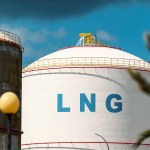Prime Minister Narendra Modi laid the foundation stone for India’s largest deep-water port, Vadhvan Port, in Maharashtra’s Palghar on August 30.
The port is poised to enhance India’s maritime capabilities and make a substantial impact on global trade. In June, the Union Cabinet approved the construction of the port. The approval for Vadhvan Port was among the first major decisions made by the Modi 3.0 Cabinet
The total cost of the project, including land acquisition, is Rs. 76,220 crore. It will be developed by Vadhvan Port Project Limited (VPPL), a special purpose vehicle (SPV) created by the Jawaharlal Nehru Port Authority (JNPA) and the Maharashtra Maritime Board (MMB), with shareholdings of 74% and 26%, respectively.
Vadhvan Port: A look at its importance
The port has been called a “true maritime marvel” given its importance in India’s trade. Set to become India’s largest deep-water port. its significance is based in several aspects, including its strategic location and capacity.
It is on its way to be one of the top ports globally, and will be three times the size of India’s current largest ports. It is being developed as an all-weather Greenfield deep draft major port The cost of the port will encompass the development of core infrastructure, terminals, and other commercial facilities through public-private partnerships (PPP),
The port will feature nine container terminals, each measuring 1.000 meters in length, four multipurpose berths including a coastal berth, four liquid cargo berths, a Ro-Ro berth, and a Coast Guard berth.
The project includes reclaiming 1.448 hectares of sea area and constructing 10.14 km of offshore breakwater along with container and cargo storage facilities. It is expected to achieve a total capacity of 298 million metric tons (MMT) per year, with approximately 23.2 million TEUs (twenty-foot equivalent units) dedicated to container handling.
“Vadhvan Port will serve as India’s new gateway to global trade, creating a cumulative capacity of 298 MMT per annum” the government said in a post on X.
In terms of employment the government has stated that the port will create approximately 1.2 million direct jobs and over 10 million indirect jobs
Previously, the cabinet had approved the establishment of road connectivity between the port and national highways, as well as rail linkage to the existing rail network. The port is set to be operational by 2030.
How will the porthelp boost trade?
The port will enhance India’s connectivity with Central Asia and Russia, boosting trade through the International North-South Transport Corridor (INSTC) and the India-Middle East-Europe Economic Corridor. It is expected to alleviate some of the pressure on Jawaharlal Nehru Port. currently the largest container-handling port in India.
According to government estimates, the port will be a significant driver for Maharashtra’s economy, contributing over 1% to the state’s GDP and fostering regional growth and prosperity. Additionally, the port will be linked to the Dedicated Freight Corridors and the Delhi-Mumbai Industrial Corridor, ensuring faster and more efficient cargo connectivity.
Source: FE Online





